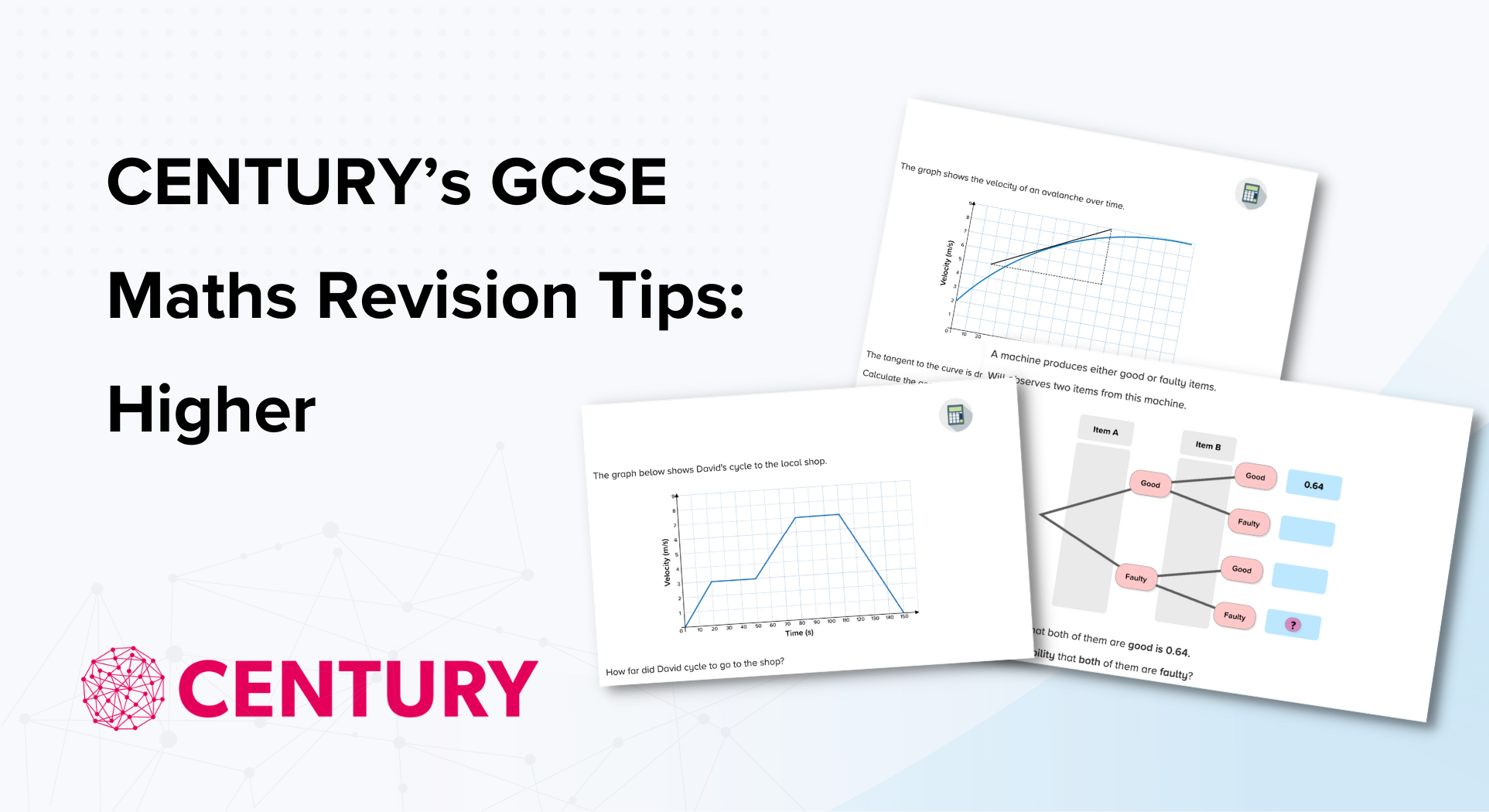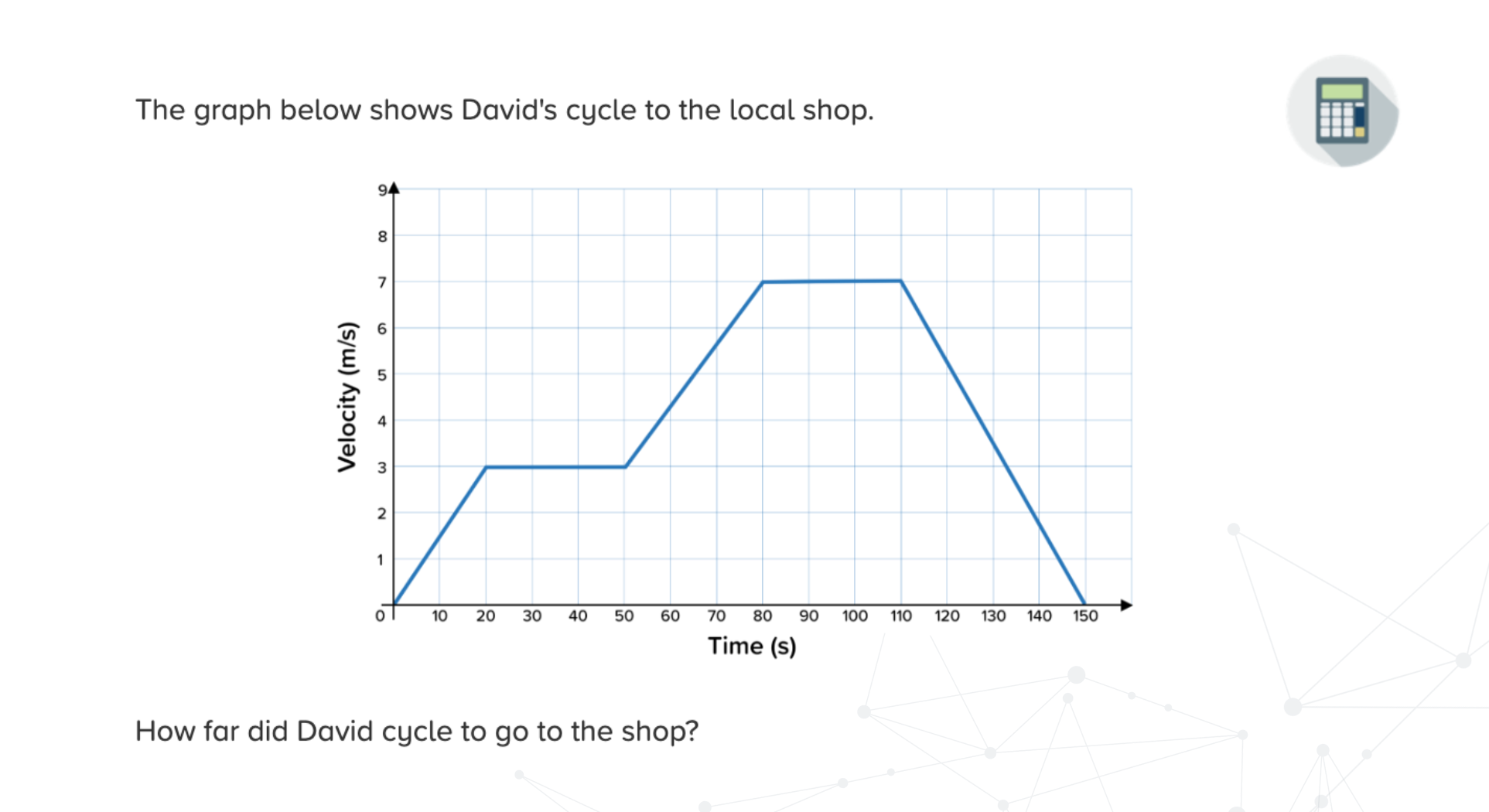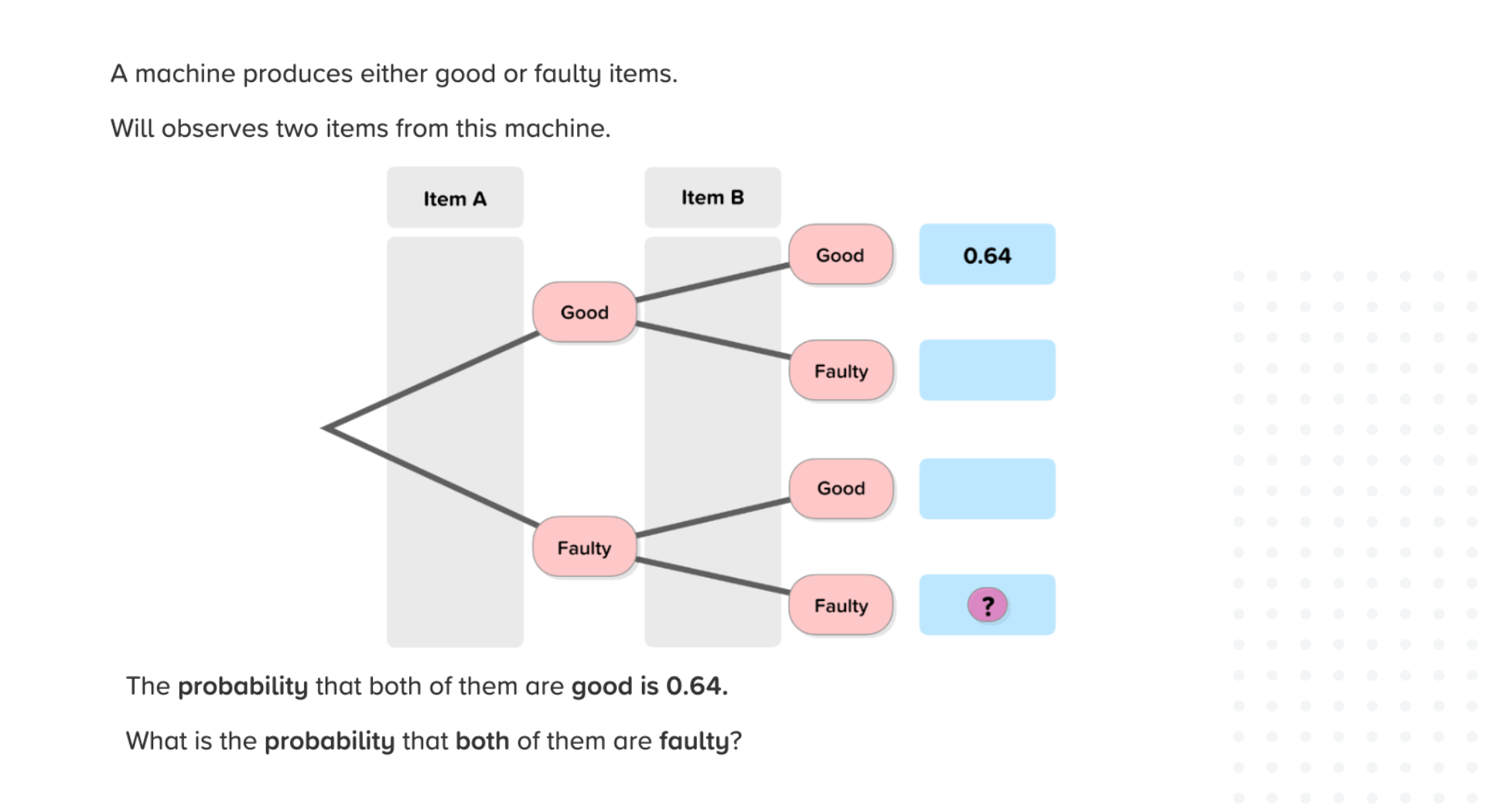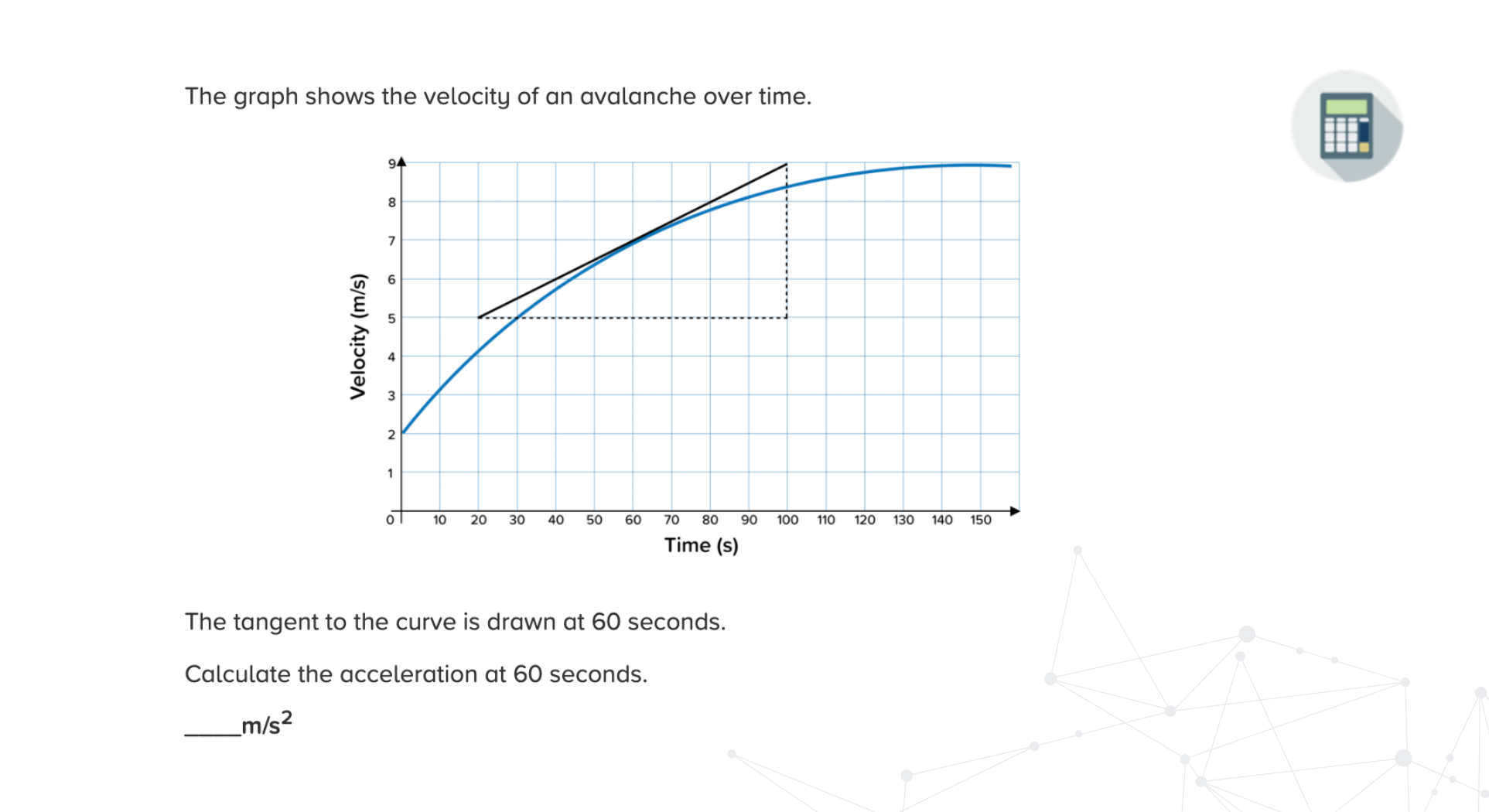CENTURY’s team of expert teachers and data scientists have analysed the data from our secondary maths diagnostics to find the topics students have struggled with the most. We have identified the following topics for the higher tier paper and suggested relevant CENTURY nuggets to revise for each. Our foundation tier revision tips are here.
CENTURY’s GCSE Maths Revision Tips: Higher
Estimated reading time: 8 minutes




Questions of this type are renowned for appearing in the latter stages of a paper, and are often worth up to 5 marks. Although this may be considered as one of the skills to differentiate students aiming for grades 8 and 9, all students can aim to pick up some marks by starting to work through the question.
Working on forming expressions and equations where no variable is given is the key skill here. Students would likely benefit from drawing a probability tree, even when there isn’t one mentioned in the question.
Revision nuggets:
- Tree Diagrams 12: Algebraic Expressions (MH46.27)
- Tree Diagrams 13: Solving Equations (MH46.28)
- Generating Equations from Words (MF19.18)
2. Enlargement with negative scale factor


The most common error here was not including the negative sign in the answer. Some practice will easily ensure all marks are picked up on a higher tier enlargements question. It is useful to remind students that it is easy to spot a negative scale factor by the ‘flipped’ image, and that the centre of enlargement is in between the original and the enlarged shape.
Revision nuggets:
- Enlargement with Negative Scale Factor (MH40.20)
- Enlargement with Negative Fractional Scale Factor (MH40.21)
- Enlargement with Mixed Scale Factor (MH40.22)
- Describing Enlargements with Mixed Scale Factor (MH40.23)
3. Product rule for counting


These questions are deceptively simple, and should be achievable for all students sitting higher tier papers once understood. A nice way to demonstrate the simplicity would be with a physical example using a few classroom objects. This will help learners physically understand what the combinations are, before linking the values to a multiplication.
Revision nuggets:
- Listing Outcomes (MF46.06)
- Product Rule for Counting (MH46.18)
4. Distance travelled from a velocity time graph


Students may gain a better understanding of this concept if built up from a basic scenario of constant velocity. Distance = speed × time is commonly known. Displaying this on a graph may help students understand the idea that this value for distance is the same as the area of the rectangle formed on the graph. For students wishing to study maths further, this can also be a great way to start introducing constant acceleration (SUVAT) equations as an extension.
Revision nuggets:
- Velocity-Time Graph: Interpreting (MH38.22)
- Velocity-Time Graph: Distance (MH38.23)
- Area of Trapeziums (MF31.07)
5. Working backwards with tree diagrams


In this question students commonly answered with 0.36, using knowledge that the sum of probabilities is 1. It is worth reminding students that all of the possible outcomes (4 in this case) should have a sum of 1. It is also useful for students to begin the habit of spotting trends in questions, for example 0.64 being linked to 64 which indicates that square roots may be relevant. Just as important as at foundation level, students will need a strong grasp of the application of the ‘and’ and ‘or’ rules, so they know when to multiply and when to add.
Revision nuggets:
- Tree Diagrams 2: Calculating Probability of Single Outcome (MF46.15)
- Tree Diagrams 4: AND/OR Statements (2 Branch Trees) (MF46.17)
- Tree Diagrams 8: Reverse (MH46.23)
6. Gradient from a tangent


Once students have grasped the idea of drawing a tangent, this question only then relies on the skill of calculating the gradient of a straight line. A useful exercise to hone the new skill could be to practise drawing tangents without completing a calculation. For students wanting to study maths beyond GCSE this is also a good pre-cursor for some A-level topics.
Revision nuggets:
- Estimating Gradients (MH24.16)
- Finding the Gradient of a Line Segment: Using the Graph (MF23.08)
Here are our revision tips for the foundation tier maths paper.
Book a demo to find out how CENTURY can help your learners prepare for this year’s exams.
CENTURY in the news
View all News
-

Case studies
11th November 2025
How Riverside Federation Changed Pupils’ Mindsets Around Learning With CENTURY
Discover how Riverside Federation uses CENTURY to support mixed-age classrooms, boost Year 5 and 6 pupils’ resilience, and empower children to take ownership of their learning.
Read more
-

Blog
6th November 2025
Crafting Quality Content: Humans, AI, and the Pursuit of Trust at…
As AI-generated content reshapes education, CENTURY remains committed to trust, accuracy and human expertise. From meticulous quality checks to learner feedback loops, discover how CENTURY ensures every “nugget” of content supports genuine understanding and lasting progress.
Read more